Never Negotiate by Email, Except…
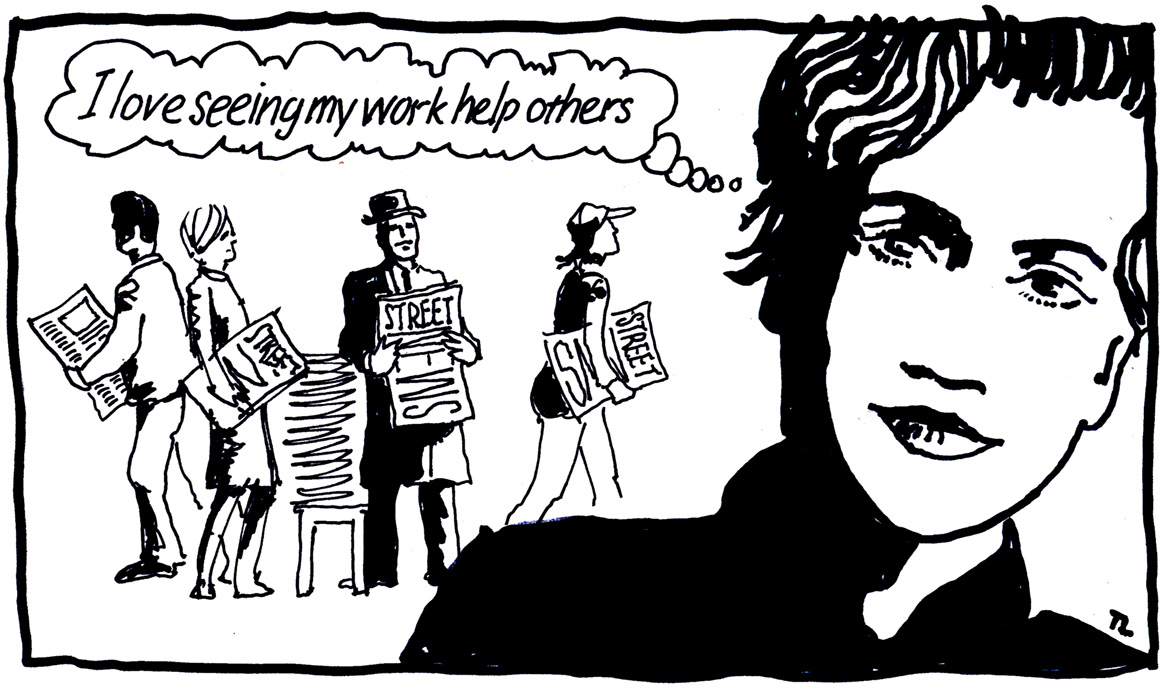
I always counsel against negotiating through email. Email doesn’t allow the opportunity to react to the non-verbal clues that make up the bulk of all human communications. But there is an exception to every rule. I was reminded of this when Meg shared her emails with me from a recent negotiation.
Meg and many others had been let go by the brand design firm they worked for, Design Reach, after a series of client losses. She’d moved across the country to Portland, OR, in order to become the Creative Director of Street News, a nonprofit that produces a monthly publication that improves the lives of the city’s homeless by providing them income opportunities and a way to be heard. The money was terrible, but she loved the work.
Then one morning she got an email from Jay, her former boss at Design Reach. Jay had also been let go.
The Email
Hi Meg,
I expect this finds you well. I’ve heard that moving from designing toothpaste packaging to saving the world has been invigorating for you. Congrats! However, I miss your smiling face and hope to entice you to work with me again.
I’ll be brief. I’ve taken the Chief Creative Officer (love that title!) position with Serengeti Design. You may have heard that the founder, Cheryl Johnson, recently won a huge EU client and is expanding.
I must confess that I’ve succumbed to the appeal of Cheryl’s vision. As I’ve gotten to know her I’ve come to realize just how serious she is about only working on projects that will make the world a better place. Never thought I’d tire of hustling consumers. You know me… toothpaste to motor oil, I’ll sell anything. Love making folks grab an’ go! But now my skills are being put to a new test — I’m persuading for good and I love it.
Here’s the deal: I want you to join us as a group Co-Creative Director — Co-CD with Frank Spade — and help us build our consumer goodness team. We’ve got the clients and they’ve got the cash to make a major expansion in the healthy/goodness world. You may know Frank; he was in fast moving consumables at Silver Design. I say Co-CD because I want the two of you to develop the category together, but with separate teams. Yes, you’ll both be hiring your own support designers and strategists. Compensation will be close to that of the top tier firms but the hours, for a change, will be reasonable. Cheryl’s a stickler on that. Solo mom of two kids, she knows balance is critical. She has nothing against making money… just knows that the best work comes from happy people. I mean, I’m only 45 and I’m tired! Those 90-hour weeks at Design Reach got to me.
I’m offering you the position. You’d be great and it fits with your new do-gooder ethic. What about it? No rush, just know I need a response by the end of the month. Needless to say there are lots of designers out on the streets these days.
Your favorite boss, Jay
Time to Think
Meg read the message, reread it, and read it a third time.
Jay had been a good boss. But favorite boss? No, not quite but a nice guy who’d fallen for the “if you can make it here you can make it anywhere” mantra that Midwest transplants live by in Manhattan. At least he’d never hit on her. A thoughtful email, but he simply couldn’t keep himself from throwing in the designers begging for work bit. He should know better than to pressure me. Jay, Jay, Jay!
Well what a change! Jay wasn’t in New York anymore. Serengeti was just up the road in Seattle. They’re hot. And they had surprised more than a few high rollers in the design biz. “I could get into that,” Meg thought, “And yes, Cheryl is well-known for her good works.”
Back to the Consulting World?
Good cause or not, brand consulting for Serengeti is far removed from directly helping the city’s poor. Meg loved seeing the magazine covers she’d designed on Portland newsstands and the resulting growth in circulation was gratifying. Sales were up both on the street and online. The street vendors were getting more money and many of them now recognized her. The Portland daily had interviewed her and that had gotten the word out. Everything so far had been thrilling. Plus the very real appreciation from the staff, street vendors, and community felt good. Meg had never had that in New York, even after 90-hour workweeks.
The money wasn’t so good though, only a quarter of her past pay. She’d been living in a tiny apartment shared with a co-worker and her savings were shrinking. Meg had been wishfully thinking that with increased sales the magazine would be able to raise her salary. This was probably not realistic anytime soon, as sales only covered a portion of the overhead. What to do?
Meg’s Reply
Hi Jay,
I’m blown away. Great to hear from you and the offer sounds wonderful. Frankly, experiencing so much personal reward from my work has been a revelation and departing hadn’t crossed my mind. It’s only been six-months. I had at least a year in the back of my head; I’ll need some time to think. FYI Jay, I’ve never left a position after only six months.
I haven’t saved the world yet, but I am making progress on my (very) small part of it. I’ve never felt so appreciated and so much a part of something. Sales are on the rise, and our vendors are all homeless so it’s a very big deal when their income grows. Best of all, they’re getting more respect, and I feel that I’ve had a hand making that happen. Like you, I thought I’d never fall out of love with the consumer product world but I have. The downside, however, is the pay.
So, to your offer:
Dude, seriously, who is this Frank? I’ve never heard of him. What’s his story? I’m sure he’s a great designer, but is he a nice person? Does he have a solid marriage or is he a bandit? As you know, I’ve had problems with powerful male creatives before. If he touches me I’ll sue. He needs to know that and so do you.
Cheryl has a great reputation so I expect the culture is good but you’re talking about some major people changes. Those can wreak havoc on morale. What are you doing to maintain the culture?
What’s the space like, how’s the neighborhood? I’ve heard some scary stories about working late in Seattle.
I need an office to go with the position, and a window. About the title, no co-anything for me. I’ll team, I’ll collaborate, but I prefer to not be double-boxed on an org chart.
This fifty-hour week thing, will you put it in writing?
Please name the clients I’d be working with. From your note I expect they will be big corps. Big guys with big egos. You need to know that I need to be treated with respect or I’ll walk. I’m appreciated here and I’ve grown very accustomed to it.
Finally, what’s the future, Jay? I love what I’m doing but I know that there isn’t really one here at Street News. I’ll have to move on at some point. So what’s the next ten years at Serengeti look like?
Thanks, Jay, for thinking of me and for the opportunity.
Let’s keep the conversation going. Meg
Meg hit send after a bit of thought and turned her attention to other matters.
The Author’s Analysis
It’s tempting to use email because it distances you from the other party and from the possibility that you’ll have to deal with things not going the way you’d like in person, which can be painful. I understand the temptation and have succumbed to it more than once myself. Meg’s in good company.
Never the less, email doesn’t let you see or feel what’s actually happening in the moment so you can’t adjust your approach in response to the other person as the conversation unfolds.
But this is different. Meg knows Jay well. They worked closely together in the intense culture of Design Reach. Jay’s familiar tone is instantly recognized by Meg and she naturally falls right into it herself in her reply, which is totally appropriate.
What’s dangerous for Meg is that she has a tendency to be very familiar, as she has above. She’s feeling like they are back at their old firm, which has kept her from thinking of Jay’s offer as the start of a new relationship with him, which it is.
Still, the advantage of email is that it provides the opportunity to examine and reflect on the written words and compose a thoughtful response. Email offers a chance to record your impressions as you read, reflect on what they might mean and jot down a few notes. Those notes provide the clues to what questions to ask in subsequent encounters.
Notice that Meg leaped on the “Co-Creative Director” issue immediately and questioned Jay. That was exactly the right thing to do. Her strong “no” will get Jay’s attention and remind him of Meg’s confident and forceful personality, which probably makes him uncomfortable but is also why he wants her.
That brings me to Jay’s ending comment about there being “lots of designers on the street.” That one little comment suggests that Jay needs Meg much more than the chatty nature his email would suggest. Everything else — the friendly tone, the cynical touches, his honest admission of succumbing to Cheryl’s ethos — all seem carefully constructed to say, “I’d like you to come on board, but I’m not desperate.” That remark suggests to me that Jay is actually anxious that Meg will not be persuaded, and that he really needs her. To compensate, he throws in this distancing remark. Doing so felt right to Jay because by making the comment, he holds his fear of not being able to persuade Meg at bay. He’s saying, “I’m not vulnerable” when he is.
My advice to Meg: Get beyond email, extend the conversation, visit the firm, meet Cheryl, talk and Skype with Jay, make lists of questions and ask as many of them as possible. Finally, what about the magazine she loves? Would Jay and Cheryl be open to bringing the magazine assignment into Serengeti? What would the magazine’s management think of that?
We’ll need to wait for chapter two to find out what happens next.

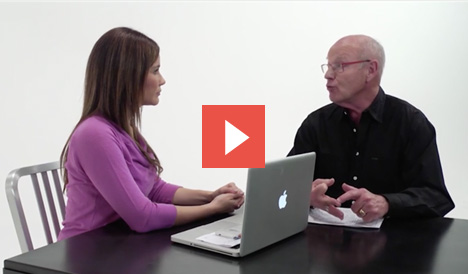
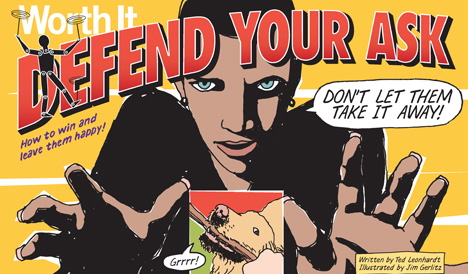
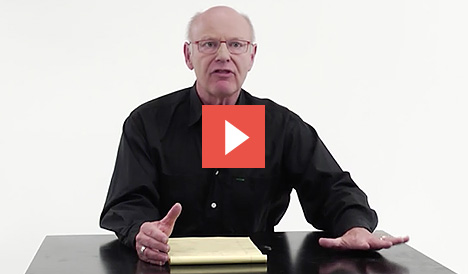
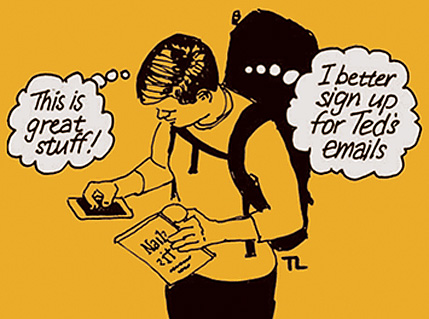
2 Comments
Ted — my professional life feels better than ever this past year, and I credit your class and writings for being a significant influence on me. Thank you!
Nice story! Illustrates well some of the limitations of email communication.